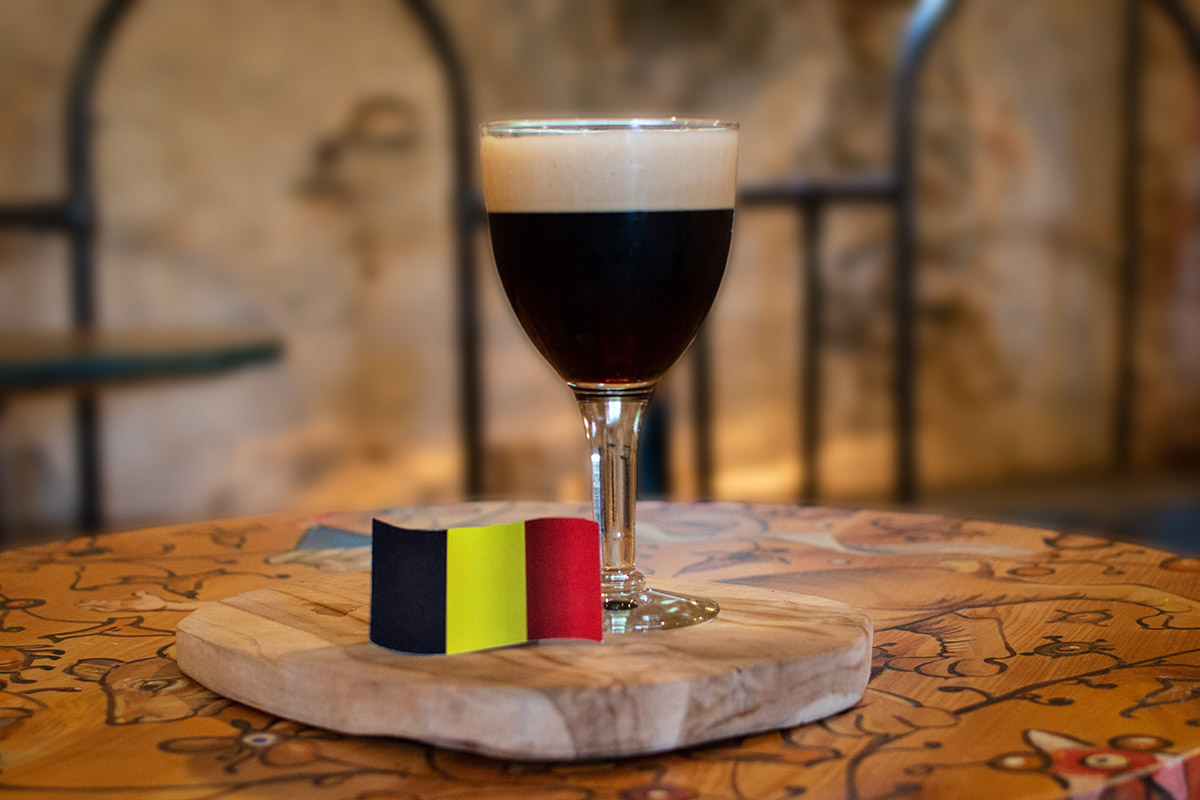Journey to Belgium: Abbey and Trappist beer and much more

Despite its small size, Belgium is home to many brewing styles: it is one of the richest beer cultures in the world, and boasts some unique and very distinctive beer types.
These include Abbey beer and Trappist beer, two names that spark the imagination and are linked to centuries-old traditions.
The custom of making beer within religious establishments was essential to the evolution of beer and is not unique to Belgium. However, this small European country is rightly considered the home and custodian of this interesting production custom.
Belgian beer: Abbey and Trappist beers
Monasteries were the first places where beer was produced on a large-scale. They took on this role at the time of the fall of the Roman Empire and the spread of Christianity, when beer became an essential food – not just a drink - for the sustenance of religious communities, especially at a time when its consumption was preferable to that of water, which was often unhealthy.
The monks made beer for their own daily consumption, but the surplus production was destined to pilgrims, the poor and possible buyers. With the process of secularization, religious orders entered a crisis and lost their leading role in beer making. However, their beers did not disappear entirely. In fact, beers linked to abbeys and monasteries are still on the market today, even if in a different form than in the past.
Two names are generally used to refer to beer made within religious structures: “Abbey beer” and “Trappist beer”. They are both the result of the historical process mentioned above, but have profoundly different meanings, which are often confused or misunderstood.
What does “Abbey beer” mean?
The name "Abbey beer" is very general and implies a more or less tight connection with a religious structure. The use of the expression Abbey beer is completely arbitrary: it does not depend on specific production rules and can be mentioned on a label without any particular limitations.
An "Abbey beer" may actually be brewed within a monastery, or by an external, non-religious brewery that has purchased a license to use the name of an existing abbey.
The meaning of “Trappist beer”
The expression "Trappist beer", on the other hand, is used exclusively to refer to beer made by the breweries of the monasteries of the Order of Cistercians of the Strict Observance, also known as Trappists. In addition, in order to be called "Trappist", a beer must abide by three strict rules:
- The brewery must be physically located within the religious facility
- The beer production must be carried out by the monks, or at least be supervised by them
- The beer must not be produced to make a profit, so all proceeds from its sale must be used to support the religious community or donated to charity.
Only by meeting these three criteria is it possible to obtain the right to display the International Trappist Association hexagonal stamp on the label. Only ten active Trappist breweries currently exist worldwide:
- Five in Belgium (Chimay, Orval, Westmalle, Westvleteren, Rochefort)
- Two in The Netherlands (La Trappe and Zundert)
- One in Italy (Tre Fontane)
- One in England (Mount St. Bernard)
- One in Austria (Engelszell).
The difference between Trappist and Abbey beers
As we have seen, there is a substantial difference between Trappist and Abbey beers:
- The former must follow particularly strict production rules and must necessarily be produced within a monastery of the Order of Cistercians of the Strict Observance
- The latter can be brewed at any monastery, and they do not necessarily need to have a connection to the religious site: they can also be brewed by a brewery that has simply purchased a license to use the name of an abbey.
Abbey beer: distinctive characteristics
By definition, Abbey beers can be very different from each other: the name does not indicate a specific style, only very generic characteristics.
Typically, Abbey beers are top fermented beers, they have a high alcohol content and the organoleptic profile is marked by the scents and flavors of yeasts. They present a fairly good attenuation and are quite carbonated.
In general, they fall under the broad style of Belgian Strong Ales. A distinction can be made based on their color (Golden and Dark), but in theory they can belong to any brewing style.
Trappist beer: distinctive characteristics
Similarly, the expression "Trappist beer" does not indicate a specific brewing style, but rather a beer that follows strict production rules that do not cover any the flavor and taste. This means that any type of beer can be a "Trappist beer". However, over the centuries some styles have emerged from the monasteries of the Order of Cistercians of the Strict Observance:
- Singel or Patersbier: historically, these are the beers brewed for the monks’ consumption, and even today they are often only available on site. They are pale in color, relatively light and easy to drink, yet complex, with a nice balance between the aromas of malt, hops and yeast.
- Dubbel: created in the Middle Ages and rediscovered after the Napoleonic era, these are amber-colored beers that tend to be sweet, opulent and elegant, marked by malty (caramel, chestnut honey), fruity (plums, dates) and spicy notes.
- Tripel: first brewed by the Westmalle Brewery in the 1930s, these are golden, strong, dry and complex beers. They are also easy to drink thanks to the bitter finish given by the hops.
- Quadrupel: brown in color and with a very high alcohol content, they are powerful and opulent, smooth and full-bodied, with a very rich flavor profile due to the contribution of fermentation by-products (esters and phenols).
How to serve a Belgian Abbey or Trappist beer
Since the terms "Abbey beer" and "Trappist beer" do not define any specific style, it is impossible to establish strict guidelines on how to serve them. However, we can mention some general rules regarding their serving temperature and glass.
Usually these beers have a high alcohol content and are rather complex, so they should not be served too cold: 12 to 14 °C suits most situations.
Again for temperature reasons, the ideal glass is the goblet, which allows the liquid to become warmer faster. This creates a generous foam, one of the most characteristic aesthetic elements of many of these beers.



